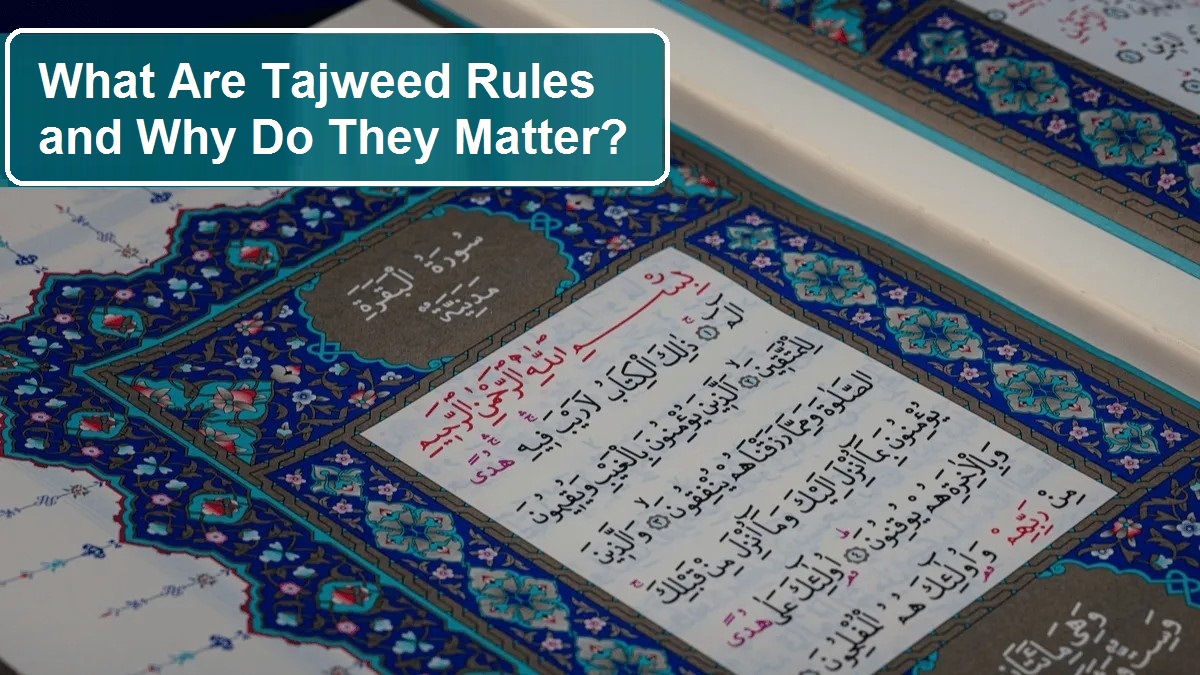
Introduction:
In the world of Quranic recitation, there exists a profound art form known as Tajweed. Tajweed rules serve as the meticulous guidelines governing the proper pronunciation and intonation of the Arabic words and phrases found within the Quran. While these rules may seem intricate to the untrained eye, their significance extends far beyond mere pronunciation. Let’s delve into the essence of Tajweed rules, exploring why they matter immensely in the realm of Quranic recitation.
Understanding Tajweed:
Tajweed, derived from the Arabic root “j-w-d,” meaning enhancement or adornment, refers to the precise articulation and modulation of Quranic verses. It encompasses various aspects, including correct pronunciation, proper elongation, and appropriate pausing, all aimed at preserving the integrity and beauty of the divine text. Tajweed is not merely a set of regulations but a profound expression of reverence and devotion to the Quran.
The Significance of Tajweed Rules:
- Preservation of Authenticity: Tajweed rules serve as a means of preserving the original pronunciation of the Quran as it was revealed to Prophet Muhammad (peace be upon him). By adhering to these rules, reciters ensure the accurate transmission of the sacred text across generations.
- Enhanced Comprehension: Proper application of Tajweed facilitates a deeper understanding of the Quranic verses. Each phonetic nuance carries layers of meaning and emotion, enriching the reciter’s spiritual connection with the divine message.
- Spiritual Elevation: Reciting the Quran with Tajweed instills a sense of spiritual elevation and tranquility. The meticulous attention to pronunciation and intonation fosters a profound sense of reverence and awe, allowing the reciter to experience the transformative power of divine revelation.
- Community Cohesion: Tajweed serves as a unifying force within the Muslim community. Reciters from diverse backgrounds and regions can come together, bound by their shared commitment to upholding the beauty and authenticity of the Quranic recitation.
Key Tajweed Rules:
- Makhaarij al-Huroof (Articulation Points): Understanding the precise points of articulation for each Arabic letter is fundamental to Tajweed. Reciters must master the correct pronunciation of consonants and vowels to ensure clarity and accuracy in recitation.
- Sifaat al-Huroof (Attributes of Letters): Tajweed rules also encompass the unique characteristics or attributes associated with certain letters. These attributes influence the manner in which letters are pronounced and contribute to the overall harmony of recitation.
- Rules of Noon and Meem: Special rules govern the pronunciation of Noon (ن) and Meem (م) when accompanied by specific diacritical marks. Mastery of these rules is essential for maintaining the flow and rhythm of recitation.
- Rules of Waqf (Pausing): Proper pausing (or stopping) at designated points within the Quranic text is crucial for conveying meaning and maintaining coherence. Reciters must observe the rules of waqf to avoid altering the intended message of the verses.
Conclusion:
In essence, Tajweed rules represent a profound commitment to honoring the divine revelation of the Quran. Beyond their technical intricacies, these rules embody a deep reverence for the sacred text and a desire to convey its message with utmost clarity and beauty. By embracing Tajweed, reciters embark on a journey of spiritual refinement, drawing closer to the essence of the Quran and experiencing its transformative power firsthand. In the words of the Prophet Muhammad (peace be upon him), “The one who is proficient in the recitation of the Quran will be with the honorable and obedient scribes (angels) and he who recites the Quran and finds it difficult to recite, doing his best to recite it in the best way possible, will have a double reward.
- https://studioarabiya.com/blog/tajweed-rules-stopping-pausing-signs/
- P.O. Box 3125, Conroe, TX 77304
- support@studioarabiya.com
- 8552262848



